 Primary_105-Year_Age_of_Seth
Primary_105-Year_Age_of_Sethcombines ancient Egyptian Seth and Enoch with
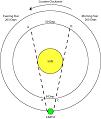 Primary 105-Year Age of Seth and Mayan
104-Year Venus Rounds Compares Mayan 104-year
Venus Round with a Jewish 105-year Venus Round.
Primary 105-Year Age of Seth and Mayan
104-Year Venus Rounds Compares Mayan 104-year
Venus Round with a Jewish 105-year Venus Round.
Time Emits Calendar Research Ancient Calendars of the Holy Bible
Ages_of_Adam
ToC
Articles
Videos
Holy of
Holies ToC
Get_More_Time
Affiliates
Print
Edition from CreateSpace.com $12.99
Ebook PDF Download $ 9.95 Mobile Blog Antediluvian Calendar Adam and Seth Enos Cainan Mahalaleel Jared Enoch 364-Days 800-Years Jewish Mayan Egyptian Donate Testimony |
|---|
How to Understand Genesis 5 Ages, number 5 in the Video Series
tells a tale of two Seths: the Jewish version from the Holy Bible
and the Egyptian version that stems from mythology. Jewish Seth
refers to the Adam's third born son as written in early Genesis.
Cain was the eldest son who lost his first born birthright. Cain
murdered brother Abel and was banished from the Lord's presence in
blessed Eden. Seth was the replacement son destined to inherit
father Adam's paradise (Genesis 4:25).
HTU_Gn_5_Ages_5_Script.html 17:02
Understand Genesis 5 Ages 5 Video Series
Two Seths: Jewish Seth & Egyptian Seth
| More Videos
at timeemits channel |
|
Related Articles
 Primary_105-Year_Age_of_Seth Primary_105-Year_Age_of_Sethcombines ancient Egyptian Seth and Enoch with Holy Bible.
 Primary 105-Year Age of Seth and Mayan
104-Year Venus Rounds Compares Mayan 104-year
Venus Round with a Jewish 105-year Venus Round. Primary 105-Year Age of Seth and Mayan
104-Year Venus Rounds Compares Mayan 104-year
Venus Round with a Jewish 105-year Venus Round. |
Jewish Seth Ages HTU_Gn5_Ages_5a_83pcSethb Sitepal.com Jewish Seth talking character intro 1:28 Sethb.mpg
 Note 1. Sitepal segment is made by creating
a character, adding recorded audio Setha.mp3 and producing html code for a
standard webpage. Paste code into composer page and browse. Do a
screen capture using AVS Editor to make the *.FLV intermediate
video file. Then convert it to *.mpg using online-convert.com or directly to youtube. Edit the
segment within Premier Pro and replace the audio with the
original *.mp3 for best sound quality.
Note 1. Sitepal segment is made by creating
a character, adding recorded audio Setha.mp3 and producing html code for a
standard webpage. Paste code into composer page and browse. Do a
screen capture using AVS Editor to make the *.FLV intermediate
video file. Then convert it to *.mpg using online-convert.com or directly to youtube. Edit the
segment within Premier Pro and replace the audio with the
original *.mp3 for best sound quality.
Note 2. Youtube
quality enhancement for cropping was applied for improved
viewing.
Scholars write that Adami had a dark,
ruddy or reddish skin color. Others say the Adami were black
headed or possibly black haired. Adami is a cultural description
rather than racial. Light and dark skin tribes were present.
Africans are known to make a paste by mixing reddish soil clay
with water. Smearing this natural sunscreen paste upon themselves
gives them a reddish tint.
Repeat Genesis 5:6 :And Seth lived an hundred and five years, and begat Enos:
The primary 105-year age of Seth
is paramount to lunar/solar origins of the begat genealogy
following Adam. Earlier videos demonstrate how 209-days of
lunar/solar separation time during 19-year cycles were
approximated to mark 210-days of lunar/solar separation time
during 20-year-l/s-cycles. Using Mayan Calendar terminology, a
Katun 20-year-l/s-cycle was multiplied by a Katun
20-year-l/s-cycle, or squared mathematically to achieve the
secondary age Baktun 400-year-l/s-cycle.
An important numerical match occurs when time becomes squared. Katun 20-year-l/s-cycles produce 210-days of lunar/solar separation time and Baktun 400-year-l/s-cycles produce 210-years of lunar/solar separation time by an identical process. Timeemits.com sequentially labels 400-year Baktun Cycles 1 to13 in order to count steps in the secondary age category. Every 400-year Baktun Cycle count results in 210-years of lunar/solar separation time. We apply the time split tool, which divides 210-years into 105-years of solar-side time split and 105-years of lunar-side time split. Primary age values for Adam and Seth only record the solar-side portion of lunar/solar time.
Seth's next scripture gives his secondary
807-year age combination in the same vein of lunar/solar
calendar meanings. Fundamental lunar/solar components are visible
by breaking down these ages.
Genesis 5:7
And Seth lived after he begat Enos eight hundred and seven years, and begat sons and daughters:
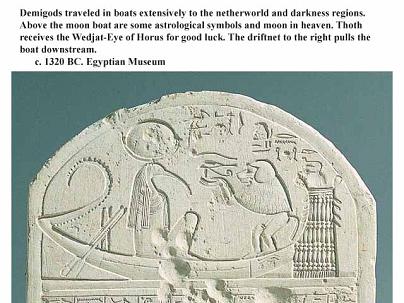 Jewish Seth
has two listings: a Primary 105-year Age and a Secondary
807-Year Age. Video 3 of this series defines Primary Ages
lasting from birth until the character fathers or begets his next
named son. Patriarch Secondary Ages then measure time until he
dies. We want to unpack these ages following the first example
Patriarch, Adam. Note the special terminology used here
and at timeemits. Some background history serves comparing Jewish
Seth with Egyptian Seth.
Jewish Seth
has two listings: a Primary 105-year Age and a Secondary
807-Year Age. Video 3 of this series defines Primary Ages
lasting from birth until the character fathers or begets his next
named son. Patriarch Secondary Ages then measure time until he
dies. We want to unpack these ages following the first example
Patriarch, Adam. Note the special terminology used here
and at timeemits. Some background history serves comparing Jewish
Seth with Egyptian Seth.
Mayan calendar math and terminology are increasingly valuable to
evaluating Seth's ages. Shared calendar fragments linger
in old legend. The observable universe was a flat disc-shaped
earth that lends intuition concerning time. Deity names and
seemingly random numbers are counting clues. Jewish and Egyptian
people once steadfastly believed the world was afloat, with heaven
above and the underworld below.
Demigods traveled in boats extensively to the netherworld and darkness regions. Above the moon boat are some astrological symbols and moon in heaven. Thoth receives the Wedjat-Eye of Horus for good luck. The driftnet to the right pulls the boat downstream.
c. 1320 BC. Egyptian Museum caption
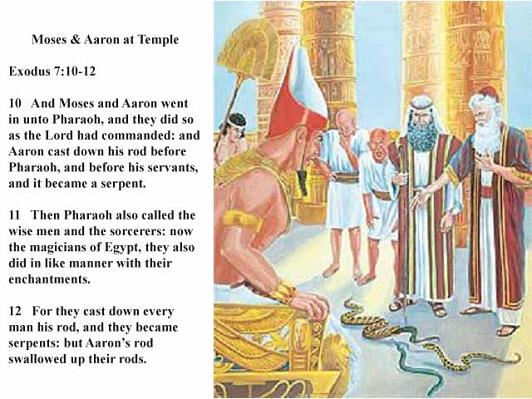 The story of
Moses tells about the adopted prince whose mother was a Hebrew
slave girl. After finding Moses amongst Nile reeds in a basket,
Pharaoh's daughter raised Moses within the court as her adopted
son (Exodus 2:10). Moses grew and learned sacred calendar
information in the temple, and especially about the gods: Seth,
Horus, Isis and Osiris. Moses had heart for the Hebrew
slaves. God guided him in how to deliver the people from
Egyptian bondage. Moses rejected all stellar hierarchy gods of
Egypt in favor of monotheism. Time and calendars ultimately belong
to one Creator.
The story of
Moses tells about the adopted prince whose mother was a Hebrew
slave girl. After finding Moses amongst Nile reeds in a basket,
Pharaoh's daughter raised Moses within the court as her adopted
son (Exodus 2:10). Moses grew and learned sacred calendar
information in the temple, and especially about the gods: Seth,
Horus, Isis and Osiris. Moses had heart for the Hebrew
slaves. God guided him in how to deliver the people from
Egyptian bondage. Moses rejected all stellar hierarchy gods of
Egypt in favor of monotheism. Time and calendars ultimately belong
to one Creator.
In
Exodus 4 (2-4),
God convinces Moses that he is empowered to bring the
children of Israel out of Egypt. His walking stick turns into a
snake and then back again; a trial run. Moses and Aaron
then start to rescue the slaves from bondage to Egypt. The
showdown occurs in Pharaoh's temple when Moses seeks permission to
leave Egypt with the slaves.
Exodus 7:10-12
10 And Moses and Aaron went in unto Pharaoh, and
they did so as the Lord had commanded: and Aaron cast down his rod before
Pharaoh, and before his servants, and it became a serpent.
11 Then Pharaoh also called the wise men and the sorcerers: now the magicians of Egypt, they also did in like manner with their enchantments.
12 For they cast down every man his rod, and they became serpents: but Aaron's rod swallowed up their rods.
This pivotal contest between the triumphant Jewish single God
versus the combined Egyptian gods changed the world. Anyone
reading the story marvels over what happens. Hindsight is better
than foresight, so we might ask: "What was the setup to enable
such a supernatural event to occur?" Yes, divine will was the
winner, but even the Egyptian rods belonging to those professing
false gods also changed into snakes. Two different Seth
characters: a Jewish version and an Egyptian version
in conflict caused an eternal calendar divide. The lunar/solar
calendar time stream was beset by solar-side forces.
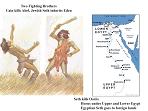 |
Get Understand_Genesis_5_Ages_5
in the Video Series tells a tale of two Seths: the
Jewish version from the Holy Bible and the Egyptian
version that stems from mythology. Jewish Seth
refers to the Adam's third born son as written in early Genesis.
Cain was the eldest son who lost his first born birthright.
Cain murdered brother Abel and was banished from the Lord's
presence in blessed Eden. Seth was the replacement
son destined to inherit father Adam's paradise (Genesis
4:25). Cart
Item Gn5A5VT includes Video 5 download .mp4, 32 mb and
transcript PDF download 568 kb
from Paypal-Payloadz eStore for Only $ 1.98 |
V-32 mb T-568 kb 1.98 |
HTU_Gn5_Ages_5dcr.jpg Sitepal.com Egyptian Seth 1:25 talking character composite using Sethc.mpg with audio HTU_Gn_5_Ages_5d.mp3 and HTU_Gn5_Ages_5d_1.jpg (Family-tree41pc.jpg) picture
 The Jewish
Seth part of me had family issues. Mom had the run-in with
that snake and then my eldest brother, Cain kills my other
brother, Able. We can't pick our family, huh! So I imagined myself
god-king of a great land called Egypt. Long before Moses, I needed
to be worshiped as the Egyptian Seth mythical
deity. Stars and planets were the realm of noble gods. Although I
had been an early founder of lunar/solar time keeping methods, the
moon gradually lost importance. My people became obsessed with
solar-side worship using star Sirius to stand for brother Osiris
and Venus for goddess Isis. I took over the planetary Venus
five-pointed star from Isis sometimes. I was mischievous
since I did not act like other star-gods.
The Jewish
Seth part of me had family issues. Mom had the run-in with
that snake and then my eldest brother, Cain kills my other
brother, Able. We can't pick our family, huh! So I imagined myself
god-king of a great land called Egypt. Long before Moses, I needed
to be worshiped as the Egyptian Seth mythical
deity. Stars and planets were the realm of noble gods. Although I
had been an early founder of lunar/solar time keeping methods, the
moon gradually lost importance. My people became obsessed with
solar-side worship using star Sirius to stand for brother Osiris
and Venus for goddess Isis. I took over the planetary Venus
five-pointed star from Isis sometimes. I was mischievous
since I did not act like other star-gods.
I left Venus calendar traces in both
ancient Judaism and Egyptology. My namesakes, Jewish Seth and
Egyptian Seth are as different as mortal men versus cartoon
characters. My Egyptian family includes the Abydos triad: Osiris,
his sister and consort goddess Isis and their son Horus. Nephew
Horus and I fought for control over upper and lower Egypt.
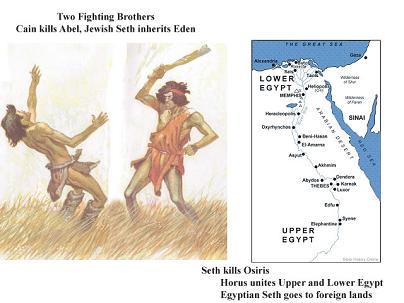 Egyptian
Seth links to planet Venus through his sister or
mother, famed goddess Isis. Isis portrays planet Venus
as the Queen of the Heavens. Isis is pictured with a large solar
disk between great horns. Her headdress symbolizes a throne for
royal femininity. Horus was the first-born son of Osiris and
Isis. Seth gets jealous of his brother's success and
chooses to murder Osiris. Hawk god Horus claims to be Egypt's
rightful heir apparent and avenge his father's death. A bitter
rivalry ensues between Seth and Horus over inheritance.
Seth fought to control his birthright Upper Egypt of the
Old Kingdom. Horus, often identified with King Menes, ultimately
defeats Seth to unite Upper and Lower Egypt. Some
versions of the story say that Horus avenges his father's death
by killing evil uncle or brother, Seth. Seth and Horus
finally reconcile in other versions.
Egyptian
Seth links to planet Venus through his sister or
mother, famed goddess Isis. Isis portrays planet Venus
as the Queen of the Heavens. Isis is pictured with a large solar
disk between great horns. Her headdress symbolizes a throne for
royal femininity. Horus was the first-born son of Osiris and
Isis. Seth gets jealous of his brother's success and
chooses to murder Osiris. Hawk god Horus claims to be Egypt's
rightful heir apparent and avenge his father's death. A bitter
rivalry ensues between Seth and Horus over inheritance.
Seth fought to control his birthright Upper Egypt of the
Old Kingdom. Horus, often identified with King Menes, ultimately
defeats Seth to unite Upper and Lower Egypt. Some
versions of the story say that Horus avenges his father's death
by killing evil uncle or brother, Seth. Seth and Horus
finally reconcile in other versions.
Two fighting brothers are eerily similar to the narrative about Cain and Abel in Genesis 4:8. After Cain's banishment, Jewish Seth inherits the birthright from Adam. Egyptian Seth attempts to steal away father's kingdom and the evil sinner is ostracized for his vile act. Egyptian Seth transfers to nearby foreign lands while Horus rules as a benevolent god. He assumes kingship for all of Egypt.
Semitic Baal weighs
against Seth for Egyptians and his female counterpart,
Nephthys is a variant of the goddess, Astarte or Astaroth. She
symbolizes Venus as a young woman with cow's horns
atop her head. Greek legends held that goddess Aphrodite stood
for love, beauty and sexual rapture. The Roman goddess of love
and beauty bears the same name as the planet. Planet Venus
identifies with the totality of feminine goddess roles.
Through a convoluted family tree of deity worship Venus
changes to masculine gender for Seth. Divine lineage,
expressed in king lists, was always passed down through the
paternal order. Mesoamerican cultures later devised an intense
spiritual hierarchy dominated by the masculine Aztec god,
Quetzalcoatl. Kukulkan was the Maya name and Viracocha was the
alternative Inca name. Lunar/solar calendar methods tracked
planet Venus with shared technique throughout the
ancient world.
venusmotion67pcb.jpg 0:20 still added to show star at beginning 2:53 HTU_Gn5_Ages_5f.mpg (venusmotion.mpg 1:27, animation slowed from 5 seconds by 5% Audio is HTU_Gn5_Ages_5f.mp3
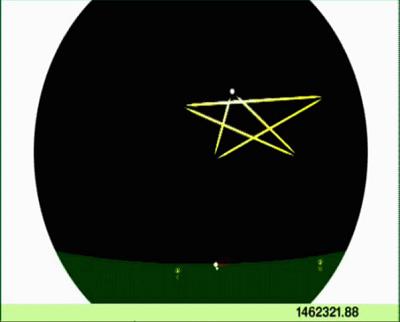 Ancient
observers noticed the relative positions of Earth, Venus and
the Sun recur according to a schedule. Venus orbits
the Sun 13 times in 8-years during the period in which
Earth orbits the Sun 8 times. Venus passes between the
Earth and Sun 5 times in 8-years. Venus, in
astronomical terms, completes five synodic periods in 8-years
or 5 complete evening and morning star circuits. The synodic
interval is the time between two successive conjunctions of planet
Venus with the Sun. Each synodic period lasts about 1.6
Earth years or 584-days.
Mesoamerican Calendars meticulously track five Venus
cycles of 584-days each over
8-Haab-solar-year multiples of 365-days.
The true orbit of Venus around the sun is 225-days and should not
be confused with Venus' heliacal rising and observable behavior.
Ancient
observers noticed the relative positions of Earth, Venus and
the Sun recur according to a schedule. Venus orbits
the Sun 13 times in 8-years during the period in which
Earth orbits the Sun 8 times. Venus passes between the
Earth and Sun 5 times in 8-years. Venus, in
astronomical terms, completes five synodic periods in 8-years
or 5 complete evening and morning star circuits. The synodic
interval is the time between two successive conjunctions of planet
Venus with the Sun. Each synodic period lasts about 1.6
Earth years or 584-days.
Mesoamerican Calendars meticulously track five Venus
cycles of 584-days each over
8-Haab-solar-year multiples of 365-days.
The true orbit of Venus around the sun is 225-days and should not
be confused with Venus' heliacal rising and observable behavior.
Venus maps a five pointed star over 8-solar-years above
the morning horizon. Each point represents one 584-day
interval. Multiplying the approximate 584-days per star
point interval five times equals 2920-days. Ancients chose
to work with whole number integers and rounded day and year
totals. Dividing 2920-days by 365-day-solar-years results
in the 8-year pattern which became foundational in
relation to solar-side counting methods of most early cultures.
Five points refer to the minor aspect in common astrology that has
72-degrees of angle between the points. Each Venus cycle
in Mayan terminology equals 584-days. Five Venusian
visibility cycles, or five Venusian synodic periods,
widely refer to sources using the ancient Greek
term, octaeteris. An octaeteris means the
period of 8-solar-years for Venus, which in the Mayan
vernacular likewise amounts to 8-Haab-solar-years having
365-days each.
tags Jewish, Egyptology (Field of
Study), Bible Study (Website Category), history, ancient, Adam,
Seth, Genesis, calendar, Venus, Book of Genesis (Book), Judaism
(Religion)